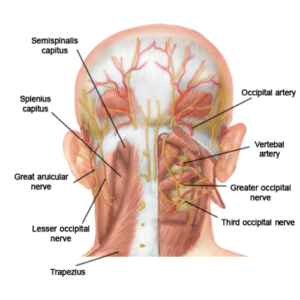
Temporal arteritis
Giant cell arteritis is an inflammation of the lining of your arteries. Most often, it affects the arteries in your head, especially those in your temples. For this reason, giant cell arteritis is sometimes called temporal arteritis.

Giant cell arteritis frequently causes headaches, scalp tenderness, jaw pain and vision problems. Untreated, it can lead to blindness.
Prompt treatment with corticosteroid medications usually relieves symptoms of giant cell arteritis and might prevent loss of vision. You’ll likely begin to feel better within days of starting treatment. But even with treatment, relapses are common.
You’ll need to visit your doctor regularly for checkups and treatment of any side effects from taking corticosteroids.
Symptoms
The most common symptoms of giant cell arteritis are head pain and tenderness — often severe — that usually affects both temples. Head pain can progressively worsen, come and go, or subside temporarily.
Generally, signs and symptoms of giant cell arteritis include:
- Persistent, severe head pain, usually in your temple area
- Scalp tenderness
- Jaw pain when you chew or open your mouth wide
- Fever
- Fatigue
- Unintended weight loss
- Vision loss or double vision, particularly in people who also have jaw pain
- Sudden, permanent loss of vision in one eye
Pain and stiffness in the neck, shoulders or hips are common symptoms of a related disorder, polymyalgia rheumatica. About 50 percent of people with giant cell arteritis also have polymyalgia rheumatica.
Complications
Giant cell arteritis can cause serious complications, including:
- Diminished blood flow to your eyes can cause sudden, painless vision loss in one or, rarely, both eyes. Loss of vision is usually permanent.
- Aortic aneurysm.An aneurysm is a bulge that forms in a weakened blood vessel, usually in the large artery that runs down the center of your chest and abdomen (aorta). An aortic aneurysm might burst, causing life-threatening internal bleeding.
Because this complication can occur even years after the diagnosis of giant cell arteritis, your doctor might monitor your aorta with annual chest X-rays or other imaging tests, such as ultrasound and CT.
- This is an uncommon complication of giant cell arteritis.
Treatment
The main treatment for giant cell arteritis consists of high doses of a corticosteroid drug such as prednisone. Because immediate treatment is necessary to prevent vision loss, your doctor is likely to start medication even before confirming the diagnosis with a biopsy.
You’ll likely begin to feel better within a few days of beginning treatment. If you have visual loss before starting treatment with corticosteroids, it’s unlikely that your vision will improve. However, your unaffected eye might be able to compensate for some of the visual changes.
You may need to continue taking medication for one to two years or longer. After the first month, your doctor might gradually begin to lower the dosage until you reach the lowest dose of corticosteroids needed to control inflammation.
